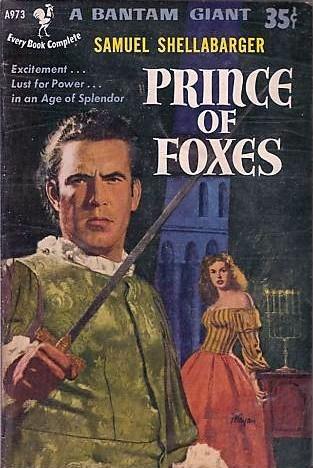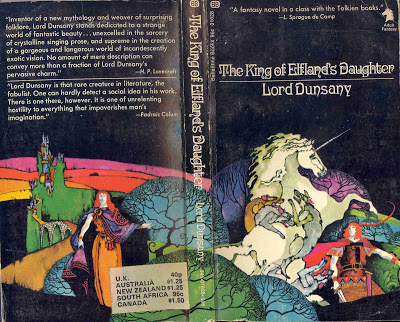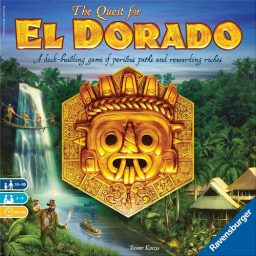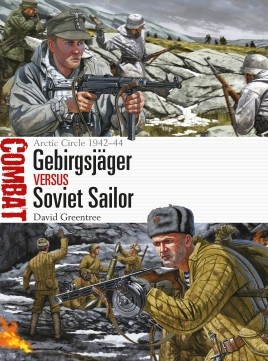Fiction (The Spectator): “Needless to say, some critics have acclaimed the show as an eerily timely warning about Trump’s America (just as the book supposedly was about Reagan’s). But needless to say too, there’s one problem with this: nothing even vaguely similar is ever going to happen, let alone become ordinary, in Trump’s America (just as it didn’t in Reagan’s). Given all the sexism and homophobia on display, it may seem odd to describe The Handmaid’s Tale as a liberal fantasy.”
RPG (New Arena): “A series which grew a devout following in Japan, Fire Emblem was a fairly unknown game in the America’s until the introduction of Marth and Roy in Super Smash Bros. Melee. Even though these two characters were not in the original Fire Emblem, they served as a launching point for Americans to become fans of the series. A game layered with well written characters, a medieval setting, and a turn based battle system, this Game Boy Advanced gem was guaranteed to consume countless hours from users.”
Fiction (DMR Books): “This novel was first published in 1947. It’s still in print– or at any rate was reprinted by Bridge Works in 2002, and probably again  since. There are reasons for that. First, it has all the characteristics of a rip-snortingly readable, fast-moving historical pulp adventure. Next, it has a great cast of characters. Last, it is even quality writing!
since. There are reasons for that. First, it has all the characteristics of a rip-snortingly readable, fast-moving historical pulp adventure. Next, it has a great cast of characters. Last, it is even quality writing!
It’s set in Renaissance Italy, circa 1500, the time of Cesare Borgia. The main character is charming and mysterious Andrea, a Renaissance man to the core, artist, soldier, diplomat, and agent of the chilling Cesare, but with a hidden past and, as the instrument designer Lorenzo says of him in the first chapter, ‘too many faces’.”
Fiction (Tolkien and Fantasy): “Between 1971 and 1974, Pan/Ballantine published British editions of some 35 books from the US list. Most of these, particularly after 1971, are easily identified, for the Pan logo is noticeable at the base of the spine. But the earlier titles, especially those in 1971, are less easy to differentiate from the US editions. In fact, some of the editions sold in the UK were actually printed in Canada. Here’s one example, the UK edition of Lord Dunsany’s King of Elfland’s Daughter, published in May 1971”
Fiction (Swordssorceryblogspot): “There’s been plenty written about the recently departed Ursula K. Le Guin, all of it far more knowledgeable about her  and her work than anything I could add. Aside from the Earthsea series, my encounters with her work were never to my liking. While I didn’t read either of her big books (The Left Hand of Darkness and The Dispossessed), I read The Lathe of Heaven plus assorted short stories. Too often, politics, for want of a better word, intruded badly or were so far from my own, I found myself completely disappointed. I doubt at this stage I’ll get to either of those two works, but I’m pretty sure I’ll reread the Earthsea books, at least the original three, again before I shuffle off this mortal coil.”
and her work than anything I could add. Aside from the Earthsea series, my encounters with her work were never to my liking. While I didn’t read either of her big books (The Left Hand of Darkness and The Dispossessed), I read The Lathe of Heaven plus assorted short stories. Too often, politics, for want of a better word, intruded badly or were so far from my own, I found myself completely disappointed. I doubt at this stage I’ll get to either of those two works, but I’m pretty sure I’ll reread the Earthsea books, at least the original three, again before I shuffle off this mortal coil.”
Fiction (The Federalist): “The story of Middle-earth is not complete, but it is nonetheless at an end. Last year, Christopher Tolkien published Beren and Lúthien, presumably the last of his efforts to edit his father’s unfinished work. He then resigned as director of the Tolkien Estate.
The material in Beren and Lúthien was previously published in the edited volumes of Tolkien manuscripts, but this book organized and collected it, making it easier to follow as both a narrative and a literary project. The story itself may be the fundamental legend of Middle-earth. It was certainly the most personal of J.R.R. Tolkien’s mythic creations—he even had “Beren” and “Lúthien” inscribed on the gravestone he and his wife share.”
Board Games (Boardgamegeek): “In The Quest for El Dorado, players slip into the roles of expedition leaders who have embarked on a search for the  legendary land of gold in the dense jungles of South America. Each player assembles and equips their own team, hiring various helpers from the scout to the scientist to the aborigine. All of them have but one goal in mind: Reaching the golden border first and winning all of the riches for themselves. Whoever chooses the best tactics will be rewarded!”
legendary land of gold in the dense jungles of South America. Each player assembles and equips their own team, hiring various helpers from the scout to the scientist to the aborigine. All of them have but one goal in mind: Reaching the golden border first and winning all of the riches for themselves. Whoever chooses the best tactics will be rewarded!”
RPG (RPG Watch): “Dungeons of Chaos is a throwback to the first open world rpgs, like the early Might and Magics and Ultimas. These games weren’t about crafting or finding something to interact with every thirty seconds, but about exploring huge open areas, fighting off monster, solving an occasional riddle, and figuring out what you had to do next. Near and far were hidden treasures and monsters both easy to defeat and way to powerful for your party. In these kinds of games you often learned brutally where you could not go until you got more powerful. Dungeons of Chaos recaptures the feeling of these types of games in their entirety, including combat and dialogue systems that you hardly see now of days. While the game is purposefully nostalgic, it at least understands what made these games fun, and offers the player a game of epic scope and a huge world to explore.”
Military History (Osprey): “In 1941-44, Nazi Germany’s Gebirgsjäger – elite mountain troops – clashed repeatedly with land-based units of the Soviet  Navy during the mighty struggle on World War II’s Eastern Front. Formed into naval infantry and naval rifle brigades, some 350,000 of Stalin’s sailors would serve the Motherland on land, playing a key role in the defence of Moscow, Leningrad, and Sevastopol. The Gebirgsjäger, many among them veterans of victories in Norway and then Crete, would find their specialist skills to be at a premium in the harsh terrain and bitter weather encountered at the northern end of the front line. Operating many hundreds of miles north of Moscow, the two sides endured savage conditions as they fought one another inside the Arctic Circle.
Navy during the mighty struggle on World War II’s Eastern Front. Formed into naval infantry and naval rifle brigades, some 350,000 of Stalin’s sailors would serve the Motherland on land, playing a key role in the defence of Moscow, Leningrad, and Sevastopol. The Gebirgsjäger, many among them veterans of victories in Norway and then Crete, would find their specialist skills to be at a premium in the harsh terrain and bitter weather encountered at the northern end of the front line. Operating many hundreds of miles north of Moscow, the two sides endured savage conditions as they fought one another inside the Arctic Circle.
Featuring archive photographs, specially commissioned artwork and expert analysis, this is the absorbing story of the men who fought and died in the struggle for the Soviet Union’s northern flank at the height of World War II.”
 since. There are reasons for that. First, it has all the characteristics of a rip-snortingly readable, fast-moving historical pulp adventure. Next, it has a great cast of characters. Last, it is even quality writing!
since. There are reasons for that. First, it has all the characteristics of a rip-snortingly readable, fast-moving historical pulp adventure. Next, it has a great cast of characters. Last, it is even quality writing! and her work than anything I could add. Aside from the Earthsea series, my encounters with her work were never to my liking. While I didn’t read either of her big books (The Left Hand of Darkness and The Dispossessed), I read The Lathe of Heaven plus assorted short stories. Too often, politics, for want of a better word, intruded badly or were so far from my own, I found myself completely disappointed. I doubt at this stage I’ll get to either of those two works, but I’m pretty sure I’ll reread the Earthsea books, at least the original three, again before I shuffle off this mortal coil.”
and her work than anything I could add. Aside from the Earthsea series, my encounters with her work were never to my liking. While I didn’t read either of her big books (The Left Hand of Darkness and The Dispossessed), I read The Lathe of Heaven plus assorted short stories. Too often, politics, for want of a better word, intruded badly or were so far from my own, I found myself completely disappointed. I doubt at this stage I’ll get to either of those two works, but I’m pretty sure I’ll reread the Earthsea books, at least the original three, again before I shuffle off this mortal coil.” legendary land of gold in the dense jungles of South America. Each player assembles and equips their own team, hiring various helpers from the scout to the scientist to the aborigine. All of them have but one goal in mind: Reaching the golden border first and winning all of the riches for themselves. Whoever chooses the best tactics will be rewarded!”
legendary land of gold in the dense jungles of South America. Each player assembles and equips their own team, hiring various helpers from the scout to the scientist to the aborigine. All of them have but one goal in mind: Reaching the golden border first and winning all of the riches for themselves. Whoever chooses the best tactics will be rewarded!” Navy during the mighty struggle on World War II’s Eastern Front. Formed into naval infantry and naval rifle brigades, some 350,000 of Stalin’s sailors would serve the Motherland on land, playing a key role in the defence of Moscow, Leningrad, and Sevastopol. The Gebirgsjäger, many among them veterans of victories in Norway and then Crete, would find their specialist skills to be at a premium in the harsh terrain and bitter weather encountered at the northern end of the front line. Operating many hundreds of miles north of Moscow, the two sides endured savage conditions as they fought one another inside the Arctic Circle.
Navy during the mighty struggle on World War II’s Eastern Front. Formed into naval infantry and naval rifle brigades, some 350,000 of Stalin’s sailors would serve the Motherland on land, playing a key role in the defence of Moscow, Leningrad, and Sevastopol. The Gebirgsjäger, many among them veterans of victories in Norway and then Crete, would find their specialist skills to be at a premium in the harsh terrain and bitter weather encountered at the northern end of the front line. Operating many hundreds of miles north of Moscow, the two sides endured savage conditions as they fought one another inside the Arctic Circle.